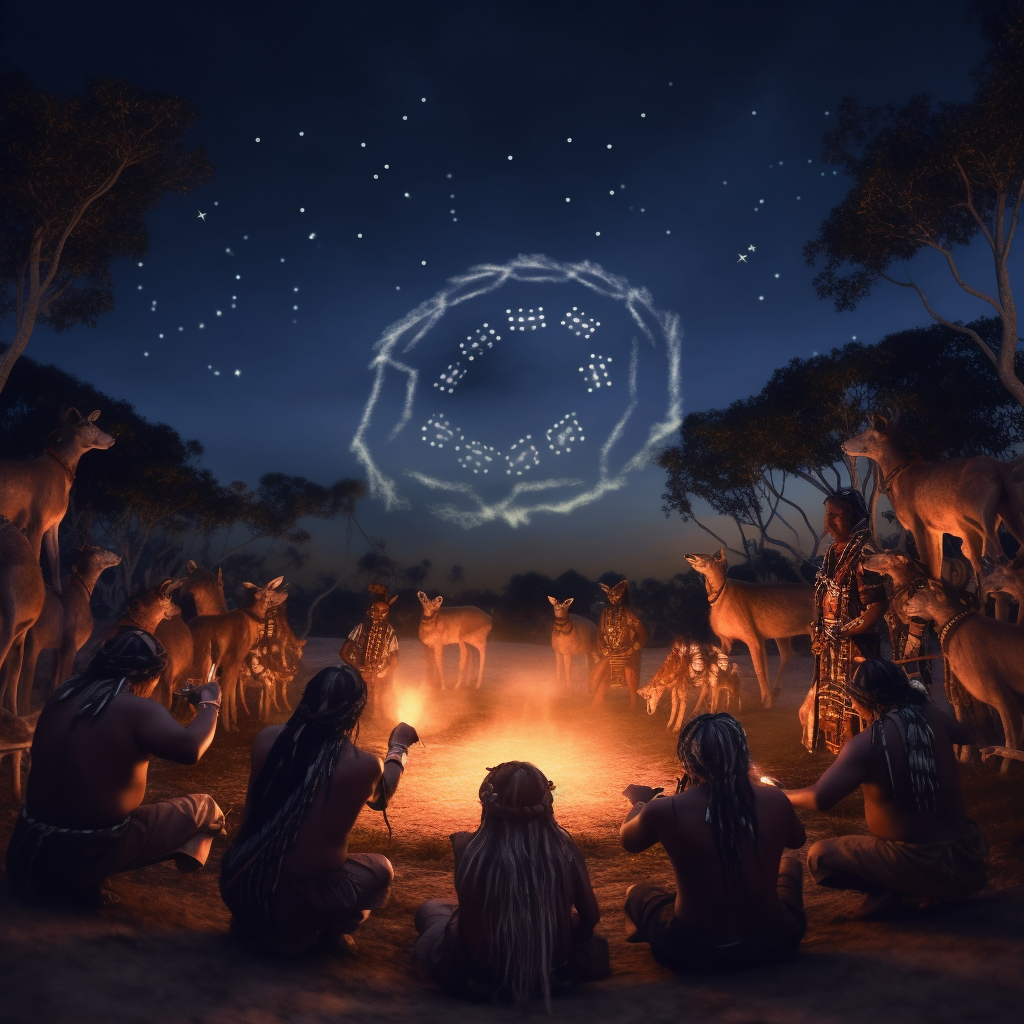The project generated a huge amount of material and lots of really insightful discussion. These discussions revolved around AI image generation, the limitations to Indigenous representation caused by the precedence of the data on which MidJourney has been trained and system limitations to representation imposed by the developers (for example, with regard to nudity), as well as around Indigenous cosmovisions, aesthetics and ways of imagining the future.
Although we had fun playing around with MidJourney and seeing what it could do, many participants were unsatisfied by the images of Indigenous people and scenes of Indigenous life generated by MidJourney. In particular, participants noted that when using a prompt that didn’t specify “Indigenous”, a specific ethnicity and/or a related region and its topography, flora and fauna, the default setting was white bodies, European or North American biomes and landscapes, and the aesthetics of European painting or of manga comics. However, when the adjective “Indigenous” was added, attempts to generate futuristic images showing Indigenous people engaging with technology were parsed by the image generator in such a way as to always depict Indigenous people and their lifeways as being very closely bound to tradition, with references to mobile phones, satellites and so on all eliminated.
Even after further tweaks were made to the prompts to provoke them to move away from MidJourney’s default white European/American representational tendencies and its colonialist vision of Indigenous peoples, many still argued, as Tadeu did when seeking to generate images of Kaingang people, that “These aren’t my relatives”. Loreto was particularly disappointed by the very white, patriarchal and individualist results that her prompt threw up. And although most expressed general happiness with the results in relation to what they had imagined and weren’t entirely put off by the deficiencies in the representation of Indigenous peoples and cultures, only Aymar found that the image that he generated of an “ancient Aymara grandfather” walking on his farm by Lake Titicaca bore a genuine resemblance to his own grandfather.
While the above hardly constitutes scientific proof of bias in the way MidJourney works and our way of working was arguably “haphazard”, with a great many variables in play at any one time, it gives a sense of some of the issues to be encountered with the representation of Indigeneity via AI image generators and encourages critical thinking in relation to their use.
Reflections
Nhenety Kariri-Xocó
“I am convinced that there is a good partnership to be had between Natural Intelligence and Artificial Intelligence, in the ability to connect information available in Natural Intelligence to Artificial Intelligence. Natural Intelligence is everything we learn through connections with our experience in local, direct, physical form; the concept of Artificial Intelligence is still being formed, but AI can make electronic, virtual connections.”
Horacio Montes de Oca Ayala
“This approach to AI from the field of visual arts was a learning experience to understand the way in which AI processes information, its logic of composition and also its biases. I am struck by the almost instantaneous ability to produce and compose images combining concepts that are difficult to unite such as the future, Indigeneity, nature and humankind. This ease in generating images is also disconcerting because it expresses a symptom of our time; what I mean is there is this huge capacity to create images or compose music or write literature almost instantaneously, but these are works that are lacking in prior reflection, in research to support the creations, in short, these are works without spirit, empty works without content.”
More findings from the project will be published in due course and links will be added when they are available.




